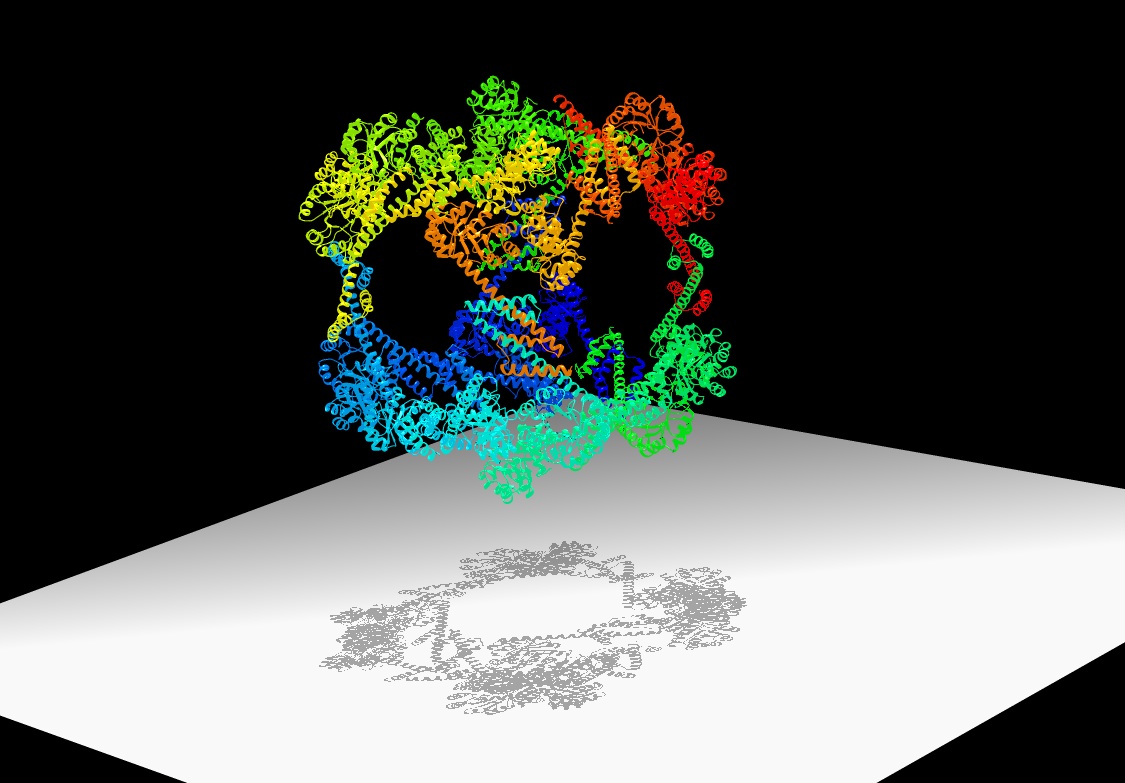Self-Assembling Porous Protein Cage Designed for Potential Biotech Applications
11/10/2014

Scientists designed a hollow, cube-shaped protein cage that may prove useful in nanomedicine and other applications. Its crystal structure, shown here, was optimized at the Advanced Light Source. [Image courtesy of Greg Hura, Lawrence Berkeley National Laboratory.]
Scientists used small-angle X-ray scattering (SAXS; aka, solution X-ray scattering) to efficiently and quickly visualize the self-assembly process of a designed cage-like protein in different conditions. The study demonstrates that accurate design of large porous protein assemblies with specific shapes is feasible, and that specificity improvements may require limiting flexibility to select against alternative forms.
The hollow, cube-shaped protein cage could potentially deliver proteins or other chemicals to specific locations for medical, energy, and other applications. These results provide a foundation for the design of advanced materials with applications in bionanotechnology, nanomedicine, and material sciences.
Funding Acknowledgements
Work supported by National Science Foundation (NSF; grant CHE-1332907, T.O.Y.), Office of Biological and Environmental Research (OBER), U.S. Department of Energy (DOE) Office of Science, and the National Institutes of Health (NIH; grant R01GM067167, F.J.A.). SAXS data collection and analysis at BL12.3.1 at the Advanced Light Source (ALS), Lawrence Berkeley National Laboratory (LBNL) supported by the Integrated Diffraction Analysis Technologies (IDAT) program (DOE OBER), by DOE (contract DE-AC02-05CH11231) and by NIH Minocycline to Improve Neurologic Outcome in Stroke (MINOS; R01GM105404).
Related Links
- BER Resource: Structurally Integrated Biology for the Life Sciences
- Feature Story: A cage made of proteins, designed with help from the Advanced Light Source
References
Lai, Y.T., E. Reading, G.L. Hura, K.L.Tsai, A. Laganowsky, F.J. Asturias, J.A. Tainer, C.V. Robinson, and T.O. Yeates. 2014.“Structure of a Designed Protein Cage that Self-Assembles into a Highly Porous Cube,” Nature Chemistry 6, 1065–1071. doi:10.1038/nchem.2107
